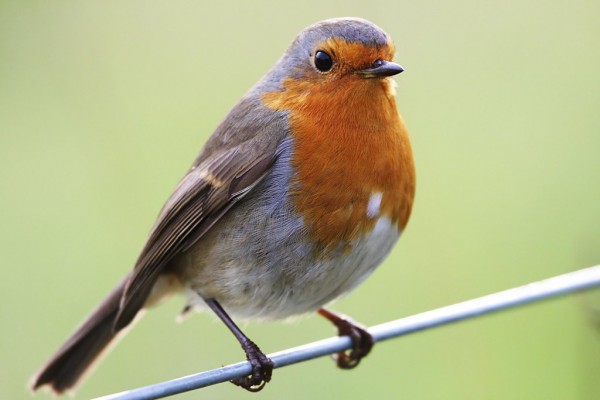"Electrosmog" Make Birds Get Lost in the City, Study Shows
| Robert Sarkanen | | May 10, 2014 08:43 AM EDT |
For the first time, a new study shows that birds exposed to AM waveband interference lose their way.
Researchers at the University of Oldenburg in Germany published a study in the coming issue of Nature, proving that the magnetic compass of robins fail when exposed to even the slightest AM radio waveband electromagnetic interference that are found in all urban areas.
Like Us on Facebook
Previously, it was believed that below a certain threshold value, what is known as "electrosmog" or man-made electromagnetic noise, had no impact on nature or biological processes.
This new study led by Prof. Dr. Henrik Mountsen, however, shows that a signal of even a thousandth of the limit value is enough to throw the birds off and make them lose their sense of direction and navigation. The level of electrosmog involved can be found everywhere in any urban environment.
The effects of electrosmog on birds are much less in rural environments, even in areas just one or two kilometres outside a major city's limits.
The researchers cooperated with Prof. Dr. Peter J. Hore of Oxford University in conducting the 7-year long research. Together, they found that although the level of interference required wouldn't come from just electrical lines or mobile phone networks, it would be generated by use of any electronic device.
It has been widely known that migratory birds use the Earth's magnetic field to navigate and determine their migratory direction, some birds flying thousands of miles across continents.
The research started when Mountsen's team were testing the robin bird's navigational abilities by placing them in wooden huts. They found that in the testing area, the birds were absolutely lost, until they covered the huts in aluminium. The aluminium wouldn't interfere with the Earth's magnetic field in any way, but would block out any "electrosmog" around.
To confirm the results, Mountsen had his doctorate students conduct multiple "double-blind" test where several generations of students were unknowingly engaged in performing the same tests. This was done to conclusively prove the results were the same every time without bias.
The study shows the disruptive electrosmog was generated by a much broader frequency and much lower intensity than previous studies had suggested, far below the limits set by the World Health Organization and the International Commission on Non-Ionizing Radiation Protection.
As a result, Mountsen expressed concern on the future survival of migratory birds, as well as the potential effects of electrosmog on human beings, which he said have yet to be investigated.
Nature magazine considered the story important enough that it will be on the covers when the issue is released on May 15.
TagsElectrosmog, Interference, AM radio, Birds, Migration, Robin, Navigation, University of Oldenburg, Germany, Oxford, Study, Electronic Devices, Health concern
©2015 Chinatopix All rights reserved. Do not reproduce without permission
EDITOR'S PICKS
-

Did the Trump administration just announce plans for a trade war with ‘hostile’ China and Russia?
-

US Senate passes Taiwan travel bill slammed by China
-

As Yan Sihong’s family grieves, here are other Chinese students who went missing abroad. Some have never been found
-

Beijing blasts Western critics who ‘smear China’ with the term sharp power
-

China Envoy Seeks to Defuse Tensions With U.S. as a Trade War Brews
-

Singapore's Deputy PM Provides Bitcoin Vote of Confidence Amid China's Blanket Bans
-

China warns investors over risks in overseas virtual currency trading
-

Chinese government most trustworthy: survey
-

Kashima Antlers On Course For Back-To-Back Titles
MOST POPULAR
LATEST NEWS
Zhou Yongkang: China's Former Security Chief Sentenced to Life in Prison

China's former Chief of the Ministry of Public Security, Zhou Yongkang, has been given a life sentence after he was found guilty of abusing his office, bribery and deliberately ... Full Article
TRENDING STORY

China Pork Prices Expected to Stabilize As The Supplies Recover

Elephone P9000 Smartphone is now on Sale on Amazon India

There's a Big Chance Cliffhangers Won't Still Be Resolved When Grey's Anatomy Season 13 Returns

Supreme Court Ruled on Samsung vs Apple Dispute for Patent Infringement

Microsoft Surface Pro 5 Rumors and Release Date: What is the Latest?










